Many of you know we drive electric cars (Nissan Leaf Tekna & Tesla Model S), many of you will also think electric cars are boring cars but will also know about the possible financial and environmental benefits, here are a few things we didn’t realise until after we purchased our electric cars:
The bad points:
Charging is a bit of a faff unless you setup a few things in advance
For instance, most if not all electric cars are charged at home, this allows you to wake up with a car with full range (80-300 miles depending on car) every day, this is one of the best hidden benefits of electric cars, however if you don’t get a tethered charger (a cable permanently attached to the outside charger) then it can be a bit of a faff to get the cable from the boot of your car, plug it into the wall box and then into your car (known as an untethered charger). Saying that the two home chargers we have came heavily subsidised from the Government OLEV scheme and it certainly beats queuing for petrol/diesel on the forecourt on a busy day. Solution: Buying a second cable and permentatly leave it plugged into your charger (just remember to lock it as they’re worth £70-£150).
Public chargers generally are OK but not perfect
They generally work OK, however, you do find little annoyances, for instance, petrol/diesel cars using them as parking spaces, known as ICE’D, (Internal Combustion Engine’d). Some chargers being over priced, they’re still cheaper than paying for petrol but a rip off compared with normal electric prices.
On the road pretty much every motorway services has a rapid charger (80% battery charge in 20-30mins), so by the time you’ve had a cuppa tea, had a wee and/or walked the dog then you’re fully charged and ready to continue your journey. The only problem with this is when someone else is hogging a charger, e.g. a Hybrid like the Mitsubishi Outlander that doesn’t NEED the electric charge they’re just charging because it is currently free. Apps like ChargeBump do help to remove this issue.
For long trips we take the Tesla, as it has a much larger range (200-300 miles, depending on how you drive) and it also has ‘free’ superchargers (170 miles of range in 30mins of charging), these are dotted around the whole of Europe and are effectively free to use as the price of them is included in the price of the car.
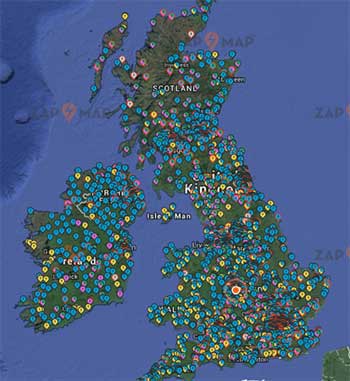 Range anxiety exists but can be managed
Range anxiety exists but can be managed
Apps like Zap-Maps allow you to plan your trips between the 4476 charging locations & 12016 chargers in the UK (June 2016), however, there is always a time when something doesn’t go to plan and requires you to divert etc. We’ve nearly run out of battery once, it was a close shave but it was our own silly fault, as we could have gone and charged but thought we would make it, we did make it but only because we dropped our speed down to 45mph max for the last 5 miles, no heating on and with the windows open (to remove fogging up of the windscreen). We passed 2 rapid chargers on the way for reference.
The beauty of electric cars is if a house/building has a power plug (as in the same one you use to plug your phone charger into) then you can charge your car, so very worst case you could knock on someones door.
Insurance can be expensive
Electric cars are generally more expensive to buy outright than their equivalent sized petrol version, this means that your insurance may increase (always get a few quotes before buying obviously) but the savings from not buying
You start to hate the smell of petrol / diesel
I was never really a fan of smelling toxic fumes but we know a few people have a weird affection for the smell of petrol stations, the problem with driving an electric car is you really notice the smell of petrol/diesel and it actually makes you feel a bit ill, it sounds ridiculous but it is true for both of us now.
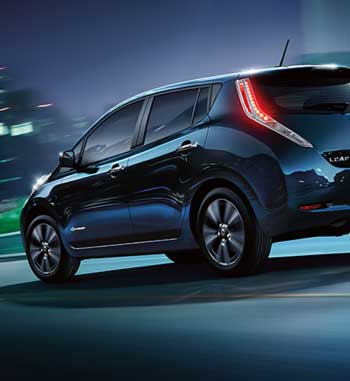 The Nissan Leaf is ugly
The Nissan Leaf is ugly
We knew this up front, it isn’t the best looking car by a long stretch, heck it’s pretty ugly from most sides, but actually when you’re sat inside it, all the other benefits outweigh this negative (just). The next gen model (2-3 years time) will hopefully get a facelift. Thankfully the Tesla is gorgeous.
Your electricity bill goes up
It is obvious, of course and it is something you’re expecting but until you’ve had a few months worth of charging at home it’s difficult to judge how much this will actually cost you. It is vital you check you’re on a decent tariff. Either way it is less than what we were paying for petrol/diesel.
The unexpected good points:
Just to be clear there are many other good points to owning an electric car, e.g. cheaper to drive, less moving parts to go wrong, hardly needs servicing, brake discs last much longer, not pumping dirty diesel into the faces of children as they walk to school, quicker 0-60 than a Ferrari/Lamborghini (the Tesla at least) etc but here are the unexpected good points:
Silence
Obviously, when test driving you notice how silent the cars are but only after driving one for a long trip do you realise how nice it is to drive around in silence (other than road/wind noise). The leaf does have a little annoying humming noise it makes to warn people walking but this can be switched off.
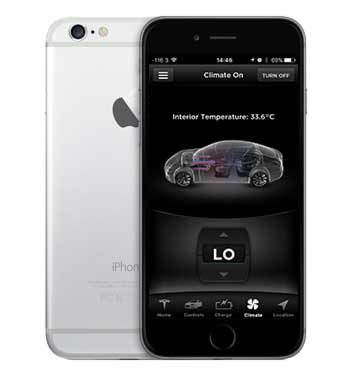 You can turn on/off the heating/cooling from your smartphone
You can turn on/off the heating/cooling from your smartphone
Lots of new cars are starting to get these ‘smart’ features but most of them can’t compete with an electric car as they would have to turn on the engine to heat the cabin. On frosty mornings, the car is melting ice/snow etc whilst you’re having your breakfast and best of all the car stays locked, it is also quite fun to race your neighbours who are out in the cold scraping the ice by hand.
This is also useful as sometimes we keep Boomer in the (large Tesla) boot for 5-10mins whilst we pop into the shop and the car stays perfectly cool for him, we place a small sign in the window to tell others what is happening, with our mobile number on the sign. Obviously, you wouldn’t do this for any longer than a quick pop into the shop.
No gears + tons of torque
To some petrol heads this might sound like the worst thing in the world but around towns and cities changing gear is just a faff. All electric cars are single speed but the beauty of this is there is no slow gear change the car just keeps going, the amount of torque also means from the line (0mph) to 30mph most electric cars will beat petrol equivalents worth 3x their value!
Free parking in some cities/towns
We live in Milton Keynes and get free parking at the shops (normally £0.80-£3 per hour), you have to be charging at the time but this is easily done and is cheaper than charging at home, albeit technically not renewable.
You don’t have to go to the petrol station
I’ve touched on this above but pulling into a petrol station when there is a ton of other people doing the same used to be one of the most frustrating times of the week. You would sit and watch others filling their cars up for what feels like an eternity, then some bright spark would start doing what appeared to be their weekly shop before paying for their fuel. Then you had to pay for the fuel, ouch!
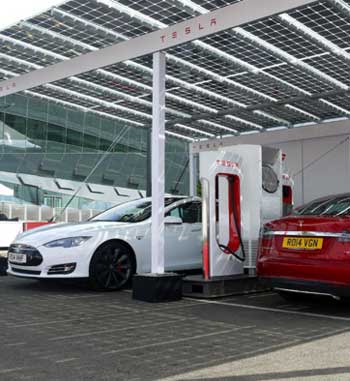 Driving around on energy from the sun is one of the best feelings you can have (engage smug mode)
Driving around on energy from the sun is one of the best feelings you can have (engage smug mode)
OK, so it’s a little bit sad and won’t be for everyone but it’s rather awesome knowing that you’re traveling around on energy from the sun. No big oil company is skimming a profit from you, just the sun, your solar panels and your car. Now solar panel payments have dropped you might consider buying all your electric energy from renewable companies.
Not caring about the cost of petrol
Sites like Petrol Prices do a great job of showing you the best place to go and fill up at the lowest prices, having to not worry about this is rather enjoyable. Also, no more crappy conversations down the pub saying “can you believe the price of fuel?”
The weird points:
Other electric cars will wave at you
You may have experienced this with other new cars you’ve owned but this is fairly common with Leaf and Tesla owners.
Some people just hate the idea of electric cars
For instance in a McDonalds drive through (yes we’re that cool) a group of lads refused to move out of our way as ‘we don’t move for electric cars’….. these are known as d*ckheads and they did walk out of the way seconds later but they were just trying to make a weird point…..
The community
I was surprised at the community spirit with electric cars, for instance our car chargers are now on a sharing scheme. If anyone wants to visit the house to charge they can, in return we get the same when we’re away and want to visit other properties. This is ideal if you get into a pickle in the middle of nowhere as you may find someone nearby with a charger they’re willing to let you use. The forums are also very helpful and full of like-minded people.
The top 10 questions we get asked and the answers
1) What is the real life range? Answer 110miles (list value 150) for the Nissan Leaf 30kW Tekna and 200-250 (list value 280-300) for the Tesla Model S P85D but remember that every day you wake up with that range and not many days of the week do we drive 100 miles, let alone 200+! The slower you go the more miles you can drive, for instance, 2 guys in a Tesla Model S 85KWh drove 452.8 miles from 1 charge, they drove at 24mph but still that shows the full potential. So if you’re stuck in traffic on the motorway you’re using considerably less power than your petrol neighbours.
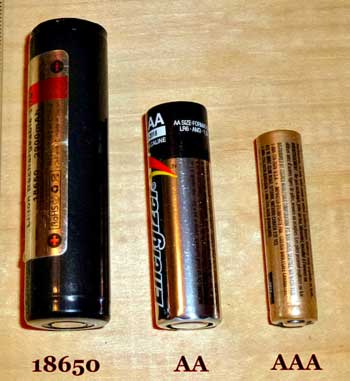
There are 7,000 x 18650 Batteries in a Tesla Model S, however these are placed inside specially cooled/heated compartments to ensure they last ages and don’t get too hot or cold (a killer for normal batteries).
2) How long will the batteries last? Tesla give an 8-year warranty as standard, Nissan say their usable battery capacity will last at least 10 years however that doesn’t mean they will just stop working after that period.
In fact a few Tesla owners have driven 500k miles on one battery pack and although they’re seeing a decrease in distance (around 5% per 100,000 miles) the performance of the car hasn’t changed and the batteries still work well just a little less range.
If after say 500,000 miles you need to replace your Tesla 85Kwh battery, you’re looking at a £12,000-£15,000 replacement cost (June 2016 price), this price will drop over time and the money you’ve saved from buying petrol will still outweigh the replacement costs.
Also, the batteries (7000+ individual battery cells per car) would still be usable, so you could sell them to a home owner wanting to charge them from solar panels or someone who wants to build a smaller electric vehicle.
3) How long does it take to charge? It depends is the short answer, the first major point is that every day you wake up with a full ‘tank’, if you drive 1-45 miles to work and back each day then it doesn’t matter how long it takes to charge as you will be generally charging over night. The long answer also depends on the type of charger you’re plugged into + the fact often you won’t fully charge the car when on road trips (to conserve battery longevity):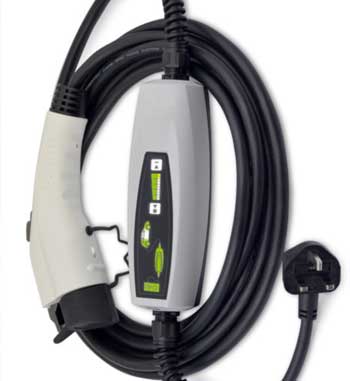
- 3kW 3 pin home plug charger (the same as the plug on your wall in your lounge) = 12-15 hours for leaf or 24hrs+ for Tesla
- 3.3-7.2kW home/street charger (most commonly installed outside your home, similar power as your oven) = 5-9 hours for Leaf & 12-15 for Tesla
- 11kW home/street charger = Leaf can’t charge at this rate, the car would drop the power down to 7kW power (if you have that spec), otherwise 3.3kw rate. Tesla 8 hours to fill
- 22kW (3 phase) home/street/motorway charger = Wouldn’t work with Leaf, as above it would drop the charge rate down. 4.5 hours for Tesla (with dual chargers, optional extra).
- 50kW street/motorway/rapid charger / Chademo = 85 miles per half hour so 35-45 mins Leaf and 1hr-2hrs Tesla, but often you will just top up until you hit 60-90% of the battery capacity (taking 20mins Leaf or 35-45 Tesla), this takes considerably less time as the first 0-75% is charged much quicker than the 75%-100% period, this is to ensure the battery lasts longer.
- 170kW Tesla supercharger = roughly 170 miles per hour, Leaf can’t charge. Tesla would take 45mins-1hr to 100% fill or what most people do is 20-35mins for 80% charge.
4) Is driving an electric car without any gears not a bit boring? We just show them this video
https://www.youtube.com/watch?v=LpaLgF1uLB8
5) How much does it cost to fill up? At home around £0-£12 (normally around £5-£7 for 220 miles) depending on energy costs, time of day, if you’ve got solar panels etc. Away from the home charger it varies again from £0 (supercharger, current Ecotricity free locations) to £5-£30 for a full charge (100-300miles).
6) Have you ever nearly run over a pedestrian? Yes, a girl ran out from behind two parked cars and didn’t look both ways, luckily we stopped in time but “Stop, Look and Listen” is only really 50% effective with electric cars, they have to look again to be sure. The leaf does have the function to ‘play’ a slight whistle noise at low speed to prevent this.

The thought of our children’s children walking to school without Diesel fumes in their faces is one that makes us happy
7) You say electric cars are better for the environment but they’re just powered by big coal factories that pump electricity to your homes… That is partially true but it depends where you buy your electricity from, for instance all of our electricity we use at home is renewable (comes from the sun, wind, waves etc), although it physically comes from the grid (not renewable yet) the company we buy from buys in the equivalent of what we use as renewable energy offsetting the energy we use.
Secondly, I’d prefer a large efficient factory produces the energy away from where my family breathes in the air.
Thirdly, many people don’t realise the sheer scale of how much it costs (to the environment and our pockets) to produce petrol/diesel. The UK government spends £6bn a year subsiding the oil industry, aka paying BP and Shell etc to make oil and petrol cheaper for you… so they’re effectively hidden costs to driving already fairly expensive petrol/diesel.
8) Why did you go electric? We were sick of having to worry about the price of fuel going up, we wanted to remove the dirty air that goes into children’s faces and feel a bit smug driving around from the power of the sun.
9) Can you extend the range of the car? Not at the moment but you don’t really need it. By the time I’ve driven 200-300miles I need the toilet or a stretch so just plug the car in and charge up. Technically you could just buy a Hybrid if you’re that worried. The leaf we use for short trips around town / commuting etc and the Tesla is used for longer trips.
10) How do you find where to plug-in to charge? Most electric cars have a built in satnav and those have the locations of the relevent chargers. Failing that we use Zap-Maps to find suitable locations. It is always best to plan this ahead of time.


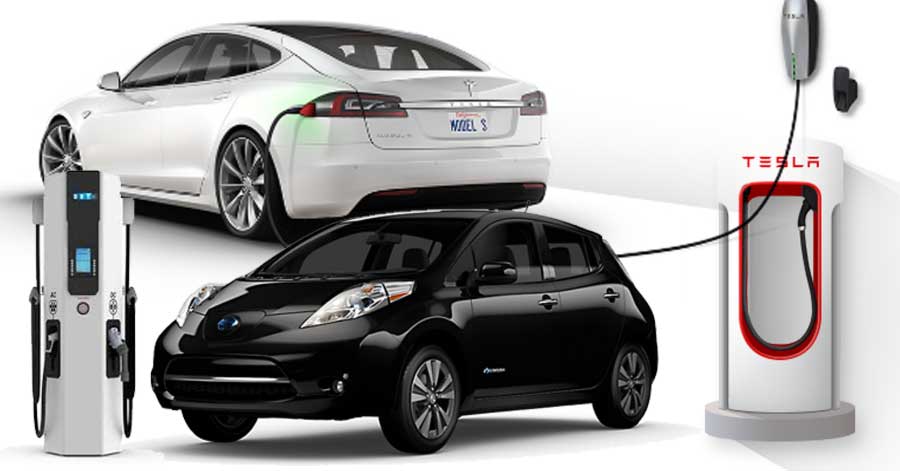


















![[Video] Argos employee stops people buying AirFryers in bulk to resell!](https://10ways.com/wp-content/uploads/2022/12/airfryer-100x100.jpg)






